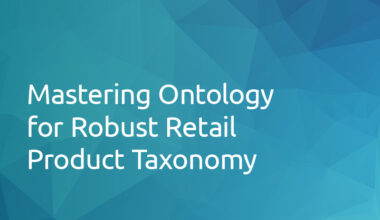In today’s highly competitive e-commerce landscape, online retailers must not only offer high-quality products but also curate a seamless and engaging shopping experience for their users. One crucial aspect often overlooked is product taxonomy. A well-structured product taxonomy, the hierarchical classification of products, not only enhances the functionality and aesthetics of your online platform but significantly impacts user experience (UX).
Understanding Product Taxonomy and Its Role in UX
Product taxonomy in e-commerce involves the systematic arrangement of products into categories and subcategories. This classification allows users to intuitively navigate an online platform, streamline their product search, and make informed purchasing decisions.
Here are three ways a well-structured product taxonomy enhances user experience:
1. Improved Product Discovery: A clear and intuitive product taxonomy aids users in finding desired products efficiently, reducing cognitive load and enhancing user satisfaction.
2. Personalized User Experience: By observing user interactions with the product taxonomy, retailers can gather insights into user preferences and behavior. These insights can further help in delivering personalized product recommendations, creating a unique and engaging shopping experience.
3. Enhanced Decision Making: A comprehensive product taxonomy, which includes product specifications, reviews, and comparison features, can aid customers in their decision-making process, resulting in increased conversions and sales.
Best Practices for Creating a User-Centric Product Taxonomy
To build a user-centric product taxonomy, consider the following tips:
1. User-Friendly Terminology: Use terms that your customers use and understand. Conduct user research, leverage SEO tools, or analyze search query data to determine the most common terms and phrases customers use.
2. Flexible Structure: Create a flexible taxonomy that accommodates growth. The structure should be able to incorporate new product categories and changes in customer shopping behavior.
3. Consistent Categories: Ensure consistency in categorization across your e-commerce platform. Each product should fit into one specific category, and each category should be distinctly different from others.
A well-designed product taxonomy is more than just an organized product listing; it’s a strategic tool for enhancing user experience. By making it easier for users to find, compare, and decide on products, a user-centric product taxonomy can increase user engagement, conversion rates, and customer satisfaction. Invest time and resources in building a robust product taxonomy, as its impacts on user experience and, ultimately, your business success, are profound.
Contact our team to learn more about how product taxonomy can benefit your business.
 1.416.619.5349 Ext.325
1.416.619.5349 Ext.325 







